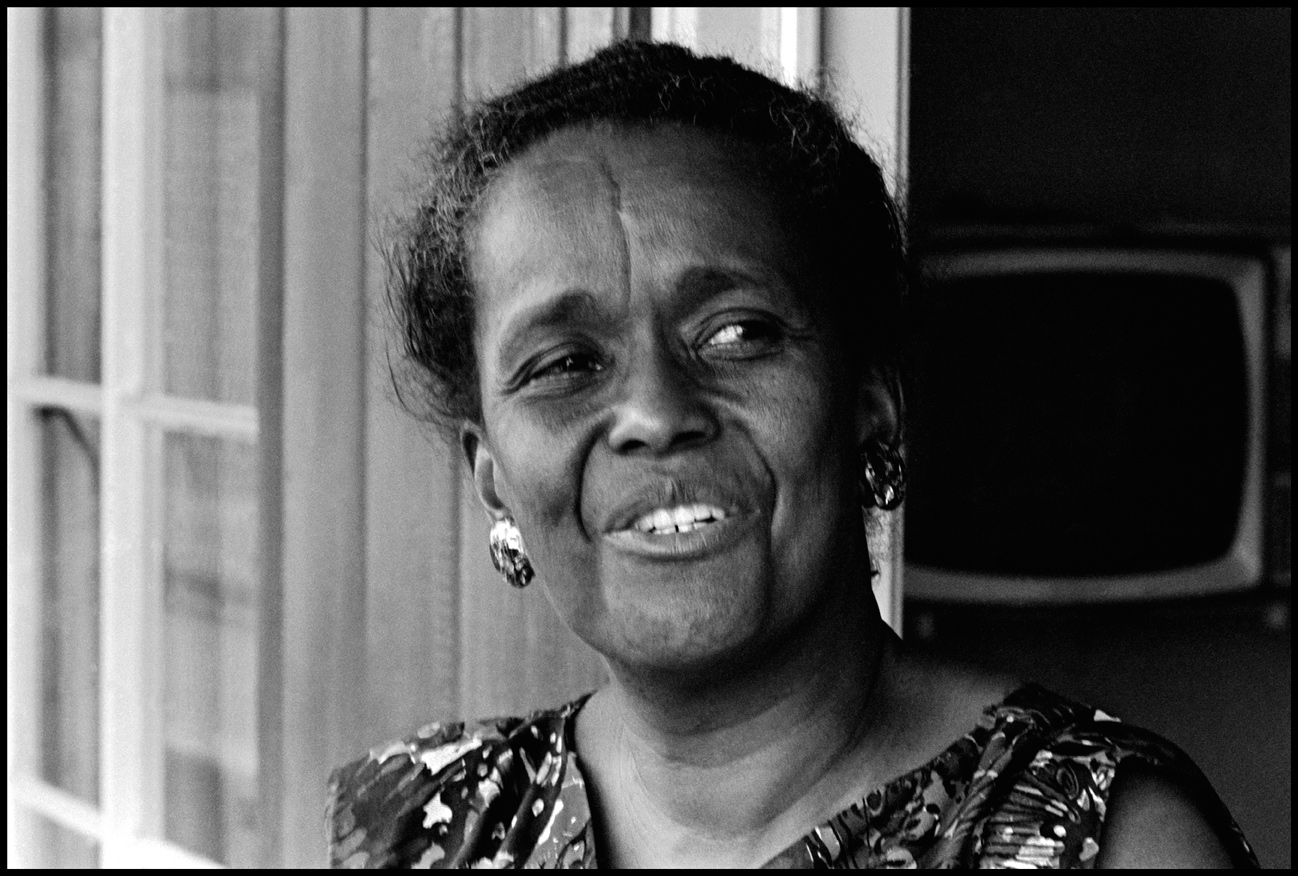1940 - 1946
Ella Baker organizes NAACP chapters in the South

Photograph of Ella Baker, 1964, Danny Lyon, Memories of the Southern Civil Rights Movement 12, Bleakbeauty.com
The local NAACP leaders who supported SNCC organizers as they began organizing voter registration campaigns were in many instances part of Ella Baker’s network. Two decades earlier, she had traveled across the South, first as a field secretary and later as NAACP Director of Branches, building and supporting local NAACP chapters. This work connected her with men and women in barber shops, beauty parlors, grocery stores, and churches. The countless small church meetings might have seemed “more exhausting than the immediate returns seem to warrant,” she explained, “but it’s a part of the spade work.” Baker believed that the organization’s potential power lay in this kind of grassroots organizing.
As Baker traveled between small communities connecting with local people across the Deep South, she always tried to present herself in an “unassuming manner.” In one small southern town, a woman approached her after a NAACP meeting and spoke of the similarity between their dresses. Sometimes people “don’t know how to deal with the verbal part, but they are identifying with you,” Baker explained, so making people feel comfortable enough to seek connections was central to her efforts. This sort of deliberately-built comfort made people feel valued and strengthened ordinary people’s political participation in the NAACP.
Her male colleagues in the NAACP did not always recognize her efforts. In 1941 Baker was sent to Virginia to conduct their annual membership campaign. Because she was a woman, NAACP Richmond branch president and state chairman, John M. Tinsley, complained that the campaign would “be too much of a hardship upon any woman to undertake.” However, after working alongside Baker for eleven days Tinsley abandoned this opinion and praised Baker to NAACP executive secretary Walter White, citing her “wonderful and outstanding quality of mixing with any group of people and trying to help solve their problem[s].” Although Baker’s efforts expanded Virginia’s NAACP membership by more than 1,500 people and raised over one thousand dollars, she felt that the campaign would have been more effective if poor and uneducated people were given priority in membership drives.
Baker felt the hierarchical structure and middle-class makeup of the NAACP limited the participation of ordinary Black citizens in the organization. She wanted Black southerners to feel ownership of the organization, rather than being viewed by the national leadership as simply a source of financing for its litigation work. When Baker became the NAACP’s Director of Branches in 1943, she pushed strongly for more democratic decision-making. She wanted to “transform the local branches” into “centers of sustained and dynamic community leadership.” This increased the growing tension with the NAACP’s New York-based national leadership. Finally, in May 1946, she resigned her position, having concluded that the NAACP’s “resistance to engaging in mass mobilizations and grassroots organizing, coupled with the lack of internal democracy” prevented the organization from having a “transformative” impact against Jim Crow.
In the summer of 1960 Baker sent Bob Moses on a trip through the Deep South to recruit students to come to SNCC’s conference that fall, and Moses traveled roads that Baker knew well. She had given him a list of her contacts that included Fred Shuttlesworth in Birmingham, Alabama, Aaron Henry in Clarksdale, Mississippi, and Amzie Moore in Cleveland Mississippi. These local NAACP leaders quickly embraced Moses–and later SNCC, ultimately shaping the direction of the organization’s work towards voting rights and Black Power.
Sources
Barbara Ransby, Ella Baker & the Black Freedom Movement: A Radical Democratic Vision (Chapel Hill: University of North Carolina Press, 2003).
Joanne Grant, Ella Baker: Freedom Bound (New York: John Wiley & Sons, 1998).
J. Todd Moye, Ella Baker: Community Organizer of the Civil Rights Movement (Lanham, Maryland: Rowman & Littlefield Publishers, 2013).
Charles Payne, I’ve Got the Light of Freedom: The Organizing Tradition and the Mississippi Freedom Struggle (Berkeley: University of California Press, 1995).




